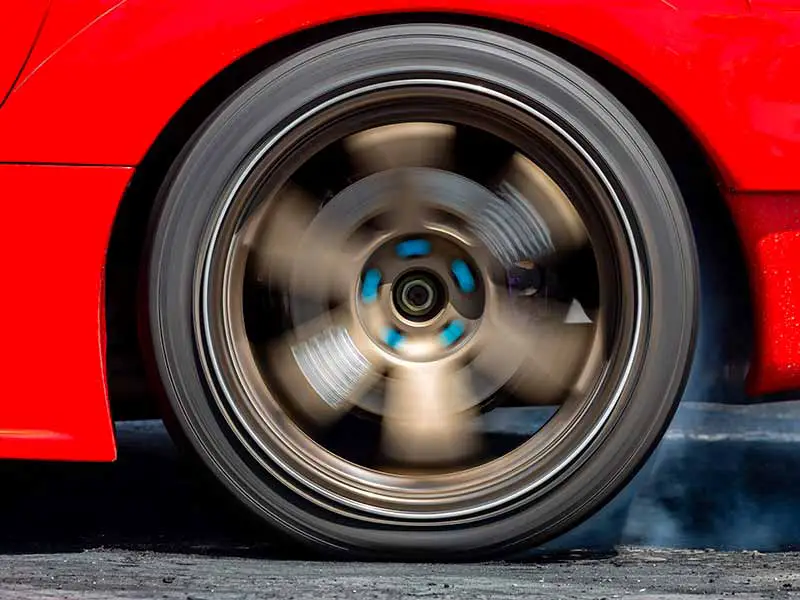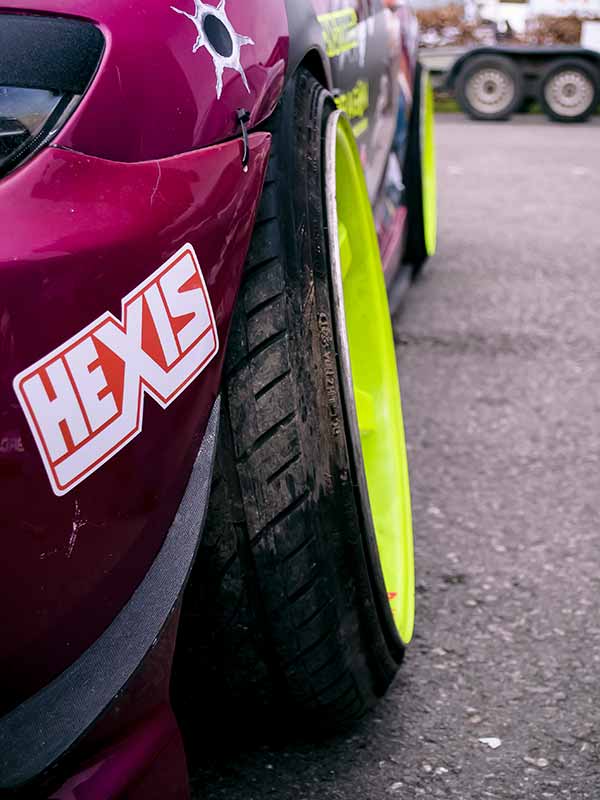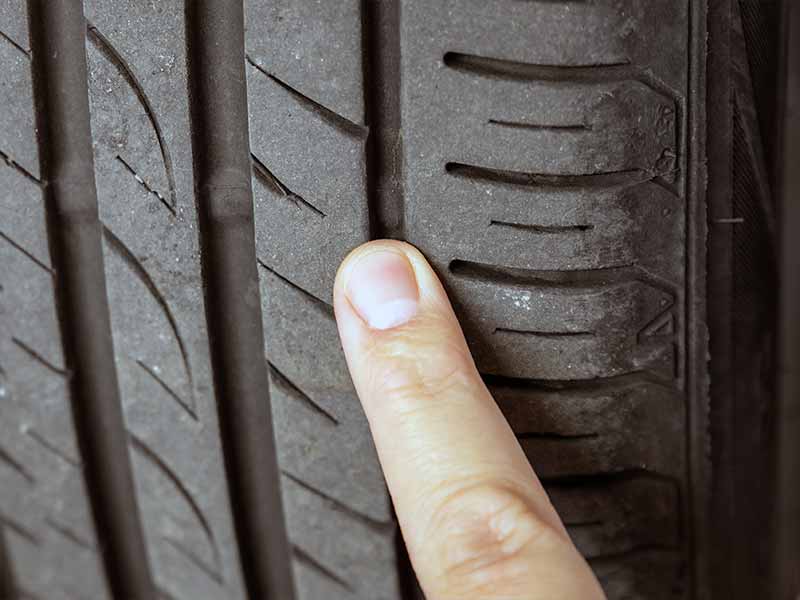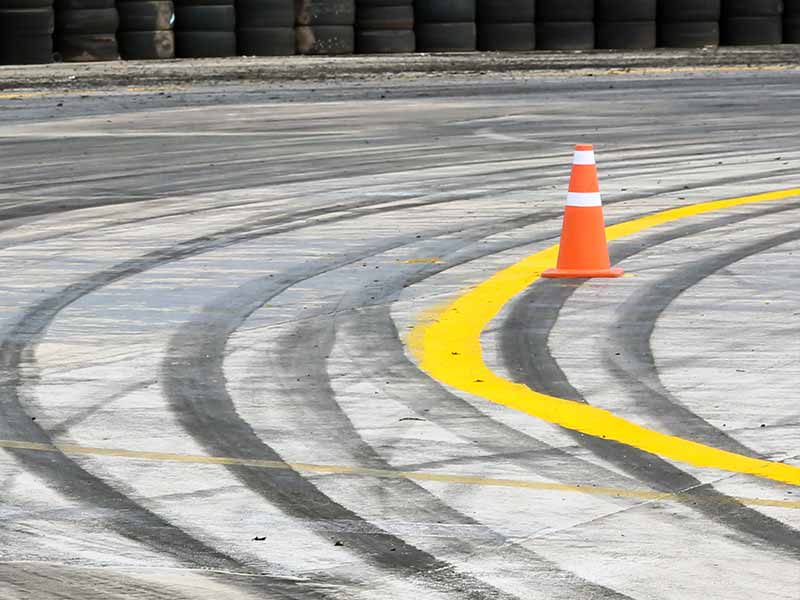Have you ever wondered the mechanics of the screeching tires and dramatic clouds of smoke in a drift race? It’s not just about the car or the driver’s skills; it’s fundamentally about the tires.
Are Drift Tires Hard Or Soft?
Drift tires are made of harder rubber compounds than regular tires. However, drifters choose either a harder or softer compound tire based on track conditions.
Soft drift tires offer more grip and responsiveness, ideal for cooler conditions and tight courses, while hard drift tires provide longer life and are better suited for high-temperature conditions and sustained drifts.
In this article, you will find a comprehensive guide exploring the nuances of drift tires. From understanding their unique characteristics to the details of setup and maintenance, and tips on choosing the right tires for your drifting style, this piece covers everything you need to know.

Understanding Drift Tires
- Definition: Drift tires are specifically designed tires for the motorsport of drifting. They are engineered to handle the unique demands of controlled oversteer, where a car glides at an angle through corners while maintaining speed.
- Purpose: The primary purpose of drift tires is to provide the right balance of grip and slip needed for effective drifting. They enable drivers to maintain control while sliding their car sideways, a key element in the sport of drifting.
Contribution to Drifting Performance
- Grip and Slip Balance: Drift tires are crafted to offer the perfect blend of grip for control and slip for maneuverability. This balance is crucial for successful drifting.
- Durability: They are designed to withstand the high levels of stress and heat generated during drifting, ensuring consistent performance throughout a drift session.
- Responsiveness: Good drift tires respond predictably to driver inputs, which is vital for precise car control during drifts.
Drift Tires vs Regular Tires
- Tread Pattern: Drift tires often have a unique tread design that differs from regular tires. This design is optimized for maximum surface contact during sideways movement.
- Rubber Compound: The rubber compound in drift tires is usually softer to provide the necessary grip. However, some drift tires might be harder for longer wear life.
- Sidewall Construction: Drift tires typically have reinforced sidewalls to withstand the lateral forces experienced during drifting.
Performance Comparison in a Drifting Context
- Grip Level: While regular tires are designed for grip in normal driving conditions, drift tires are tailored to offer controlled grip levels suitable for drifting.
- Wear Rate: Drift tires are expected to wear out faster than regular tires due to the extreme conditions they endure.
- Heat Resistance: Drift tires are better equipped to handle and dissipate the heat generated during a drift, unlike regular tires which are not designed for such extreme use.
For a deeper dive into the differences, check out our detailed comparison of Drift Tires vs Regular Tires.

Characteristics of Drift Tires
In the adrenaline-fueled world of drifting, the type of tires you use can make a huge difference. This section delves into the characteristics of drift tires, focusing on hard versus soft compounds as well as the role of tire pressure in drifting.
Hard vs Soft Drift Tires
- Hard Tires: These tires are characterized by a harder compound, which generally means they are made of a stiffer rubber mixture.
- Soft Tires: In contrast, soft tires are made from a softer rubber compound, giving them a more pliable and grippier texture.
Pros and Cons
- Hard Drift Tires:
- Pros: More durable and longer-lasting; better suited for high-temperature conditions; can handle sustained drifts.
- Cons: Less grip, which can make them less ideal for technical courses; can be more challenging for beginners.
- Soft Drift Tires:
- Pros: Greater grip and responsiveness; better for cooler conditions and tighter, more technical courses.
- Cons: Tend to wear out faster; not as effective in high-temperature environments.
Are Hard or Soft Tires Better for Drifting?
The answer depends largely on the conditions and your drifting style. Soft tires are generally better for tight, technical courses where grip is crucial, while hard tires are preferable for longer, high-speed drifts, especially in warmer conditions.
Tire Pressure for Drifting
Tire pressure can dramatically influence your drifting performance. There’s no one-size-fits-all pressure; it varies based on tire type, vehicle, and conditions. However, here are some general guidelines:
- Lower Pressure: Increases the tire’s contact patch with the road, providing more grip. This can be beneficial in tight corners but may reduce stability in straight lines.
- Higher Pressure: Reduces the contact patch and grip, facilitating easier drifting. This is often preferred for long, smooth drifts but can make the car harder to control.
How Tire Pressure Affects Drifting Performance
- Control: The right tire pressure can help balance between grip and slip, essential for controlled drifting.
- Wear and Tear: Incorrect pressure can lead to uneven tire wear, reducing the lifespan of your drift tires.
- Responsiveness: Tire pressure affects how the car responds during drifting. The right pressure can enhance the car’s handling, making drifts smoother and more predictable.

Drift Tire Setup
Now that we’ve got a handle on what drift tires are and how they differ from regular tires, let’s talk setup.
Let’s talk about camber and the best camber settings for drifting as well as some key pointers for drift tire configuration.
Best Camber for Drifting
Camber is not just a fancy term; it’s a crucial angle in the drifting equation. Here’s the lowdown:
- What is Camber? It’s the angle of the tire in relation to the road surface. Imagine looking at your tires from the front of your car; if they tilt inwards at the top, that’s negative camber.
- Optimal Camber for Drifting:
- Negative Camber: This is generally preferred as it increases grip during heavy cornering, a staple in drifting.
- Finding the Right Angle: Too much negative camber can reduce the contact patch and grip in a straight line. It’s about finding a balance.
For a detailed explanation of camber, our article on What is Camber? offers a comprehensive look.
Drift Tire Configuration
Setting up your drift tires isn’t rocket science, but it does require some attention to detail. Here are some key considerations:
- Alignment: Proper alignment is critical. It’s not just about straight lines; it’s about ensuring your tires are set up to handle the unique angles and pressures of drifting.
- Tire Pressure Adjustments: As mentioned earlier, tire pressure can drastically affect your drifting. Experiment with different pressures to see what suits your style and the conditions.
- Regular Checks and Maintenance: Drift tires go through a lot. Regularly checking for wear, tear, and pressure changes is essential for consistent performance.
Practical Tips for Maintaining Drift Tires
Maintaining your drift tires is as important as setting them up. Here’s how to keep them in top shape:
- Rotate Regularly: Drifting can wear out tires unevenly. Regular rotation can help extend their life.
- Monitor Tire Health: Keep an eye out for excessive wear, cuts, or other damages.
- Stay Informed: Understanding your tire’s capabilities and limits can prevent premature wear and accidents.

Choosing the Right Drift Tires
This is where your knowledge meets the road, literally. We’ll explore the types of tires that seasoned drifters use and guide you through selecting the perfect set for your drifting style and conditions.
What Kind of Tires Do Drifters Use?
Drifters are like artists; they have their preferences when it comes to their tools. Here’s what you need to know about the types of tires used in drifting:
- Soft Compound Tires: Favoured for their grip, these are great for tight, technical courses.
- Hard Compound Tires: These are the go-to for durability, especially in high-temperature environments or for longer sessions.
- Street Tires vs. Specialty Drift Tires: While some drifters start with regular high-performance street tires, specialty drift tires offer the optimal balance of grip, slip, and durability.
How to Choose Your Drift Tires
Selecting the right drift tires can feel like navigating a winding road. Here are some pointers to keep you on track:
- Consider Your Vehicle: The weight and power of your car influence the tire choice. Heavier cars might benefit from harder tires.
- Driving Style: Are you into aggressive drifting or a more controlled style? Your driving technique will dictate the ideal tire hardness and tread pattern.
- Track Conditions: Think about the surfaces you’ll be drifting on. Different textures and temperatures call for different tire characteristics.
- Budget and Longevity: Drifting can be hard on tires, so consider how often you’re willing to replace them. Sometimes, a more durable tire might be more cost-effective in the long run.
Tips for Beginners and Advanced Drifters
Whether you’re just starting out or you’ve been at this for a while, here’s some tailored advice:
- For Beginners: Start with a more forgiving tire. Look for something that offers a balance of grip and slip, so you can learn the ropes without too much frustration.
- For Advanced Drifters: You likely know what you need, but always be open to experimenting with different setups. Sometimes a slight change can unlock a new level of performance.
Resources
Below are some links you may find helpful when learning about tires:
- Drift tires: What you need to know – Discount Tire
- Guide to drifting tires and wheels – Tire Agent
- Drift tire technology explained – Falken Tires
Final Thoughts
The choice between hard and soft drift tires is more than a matter of personal preference; it’s a decision that can significantly affect your car’s performance and your drifting experience.
Hard tires are more durable and better for hotter conditions, while soft tires offer enhanced grip and are suitable for cooler, more technical courses.
Understanding the role of tire pressure, camber settings, and regular maintenance will also help in optimizing your drift performance.
Good luck and happy motoring.





